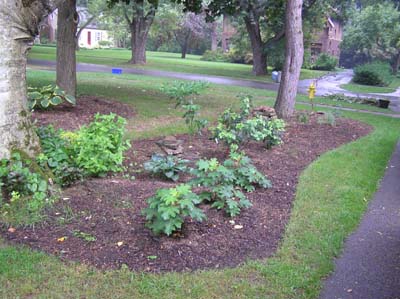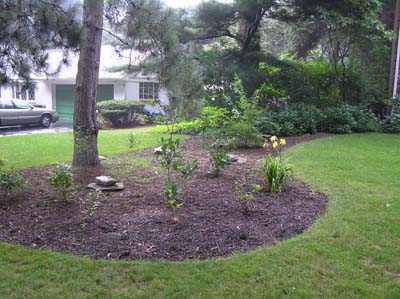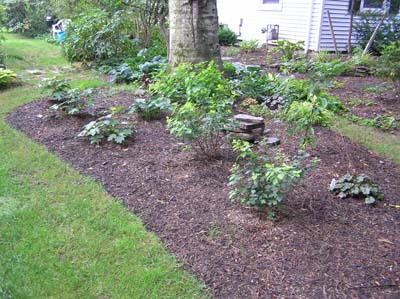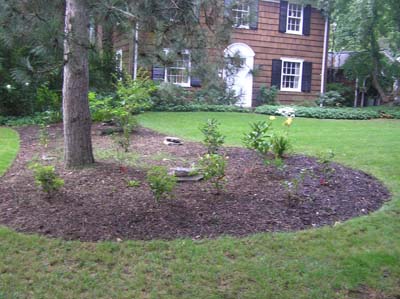Mature City Neighborhood
This natural landscape is installed in an older neighborhood. Most of the surrounding properties have very traditional formal landscapes. The owners were interested in relandscaping their front yard to be more attractive to birds. They were also interested in reducing the amount of lawn they had to mow. Two landscape beds were installed one on each side of the front yard. The beds were laid out to incorporate the existing mature trees and create a seamless integration with their existing landscape and blend into the neighborhood. In a short period of time this planting will develop into a full, lush landscape frequented by birds and filled with varied flowers, fruit and foliage.
The native plants had to fit in with the character of the neighborhood but still achieve the goal of attracting wildlife . The landscape incorporates the larger existing trees as key components of the landscape. Species with different mature heights are used to create multiple levels of vegetation which is an important component of bird habitat. High quality habitat requires a mix of species and dense vegetation. Smaller plants were used to achieve the desired affect while keeping installation costs down. The smaller plants establish quickly, have a high survival rate and achieve better long term results than installing larger plants.
Species were chosen that offered the best color and textural display but would not outgrow the yard.
The species list included: TREES; Mountain silver bell, Pagoda dogwood, Oregon vine maple, Serviceberry, Fringe tree. SHRUBS; Oak Leaf Hydrangea, Winterberry, Black Chokeberry, Summersweet, Dwarf Fothergilla, Spicebush, Nannyberry, Fragrant sumac




